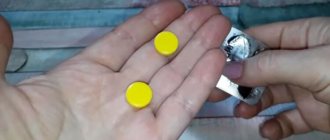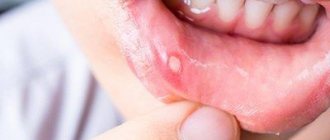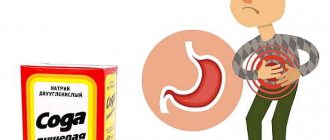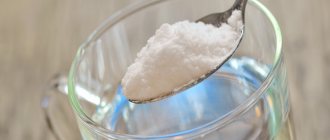Description
This drug appeared in the middle of the last century. Previously, it could only be found in the first aid kit of spaceships. Later it appeared everywhere and was widely used by Russians.
The drug is available in the form of an ointment, spray, solution. It acts on many harmful bacteria, but the remedy is powerless against viruses. Miramistin is used for prevention and treatment in urology, gynecology, and ENT practice.
The drug treats diseases such as:
- angina;
- stomatitis;
- urethritis;
- laryngitis;
- otitis;
- sinusitis;
- vaginosis.
You can also use it to prevent sexually transmitted infections after unprotected sexual intercourse. After operations, it is recommended to treat sutures with Miramistin.
Different forms of release are used for different diseases. For example, a small bottle with a dropper is sold for sinusitis. For gynecological and urological purposes, a large bottle with a long nozzle is produced.
Video on the topic: consultation with a specialist
Share with friends
Rate this article:
ratings, average:
out of 5)
Loading…
From birth, a person is surrounded by various microbes and viruses. Some are safe and even necessary for the normal functioning of the body, others lead to disease. One of the main ways infection enters the body is the throat, so it usually starts to hurt first. Scientists have long been trying to create a medicine that would be suitable for people of any age and be as effective as possible.
Miramistin's unique ability to cope with a large number of microorganisms makes it an indispensable assistant for sore throat in an adult or child
One of these drugs is Miramistin for the throat. It was originally intended for use in extreme space conditions. Over time, the drug became available to ordinary users; it is successfully used to disinfect the oral cavity and purulent wounds.
Miramistin is sold in the form of a solution, ointment, spray. Thanks to this, the possibilities of its use expand: irrigation or gargling, applying bandages to the skin. Miramistin's unique ability to cope with a large number of microorganisms makes it an indispensable assistant for sore throat in an adult or child. It is prescribed to women during pregnancy and to infants up to one year old.
Is it possible to gargle with Miramistin?
For throat diseases, it is necessary to treat it with Miramistin. You can simply spray it on your throat, or you can gargle it. For an adult, there is no need to dilute the drug with water. And for children you can dilute it half and half with water.
You should rinse after eating, having previously cleaned your mouth. Ten milliliters of product is enough for one procedure. You need to rinse for five minutes, pronouncing the sound “s”.
It is important to ensure that the child does not swallow the product. If an adult or child accidentally swallows Miramistin, then there may be nausea or an allergic reaction. If the remedy has already been used before and there was no allergy, then swallowing the remedy can only cause nausea.
The procedure must be repeated at least five times a day. You can alternate rinsing with Miromistin with conventional products (sage, chamomile, oak bark). If the sore throat is purulent, you can wipe your throat with a cotton swab soaked in Miramistin.
The benefit of this product is that it not only deactivates harmful microorganisms, but also improves immunity. Miramistin is also good because it is practically not absorbed into the blood.
Types of stomatitis depending on age
Dentists note a certain pattern between the patient’s age and the type of stomatitis. Children are most often affected by the disease. This is due to the structural features of the child’s mucous membrane, which is formed gradually, and therefore has its own characteristic features.
- Children under one year of age often develop the fungal type (thrush). This is due to the slightly acidic or neutral reaction of saliva, which creates favorable conditions for Candida fungi.
- From one year to three years - the viral type. Saliva loses its protective properties. The content of lysozyme, a substance that fights pathogens, decreases.
- Until the age of seven, local immunity declines. The child becomes susceptible to a bacterial type of disease.
- The active development of immunity before the age of fifteen becomes the cause of an allergic type of stomatitis.
Most often, the medicinal antiseptic Miramistin is prescribed to combat stomatitis. Miramistin for stomatitis has proven itself well for patients of any age. The drug is approved for use from the first days of their life and for nursing mothers.
Composition of the drug
The drug contains a complex chemical substance that has a long name. Miramistin is an aqueous solution of the substance 0.01 percent. It is completely transparent, but sometimes there is sediment.
The solution is available in the form:
- drops in the nose and ears;
- throat spray;
- gargling solution;
- bottles with attachments for douching in gynecology;
- bottles with sprayers for use in urology, surgery, dentistry;
- sterile eye drops.
Miramistin is also produced in the form of 0.5 percent ointments used in dermatology. The uniqueness of the active substance is that it recognizes diseased cells without affecting healthy ones.
How to dilute Miramistin for rinsing
According to the instructions, a 0.01 percent solution of Miramistin is a ready-made dosage form and does not require additional dilution.
However, judging by the reviews, the practice of using an antiseptic for rinsing has revealed some inconvenience in its use, due to the small amount specified for a single dose (less than one tablespoon).
This problem can be solved by adding the same (or half) part of clean drinking water to the required amount of medicine.
Patients with hypersensitivity who experience a slight burning sensation and discomfort when rinsing with miramistin act in a similar manner: a reduced concentration of the drug has a more gentle effect on the mucous membranes of the oral cavity and hypopharynx, maintaining the full antiseptic effect.
- Miramistin for gargling: purpose and dosage by age
For an adult
Using, according to the instructions for use, for a one-time rinse, the medicinal solution can be diluted with water in two proportions:
- 1:1;
- 2:1.
To kid
For children, reduced single doses are provided with the recommendation of diluting a 0.01 percent solution of Miramistin:
- from three to six years of age, 3-5 ml of the drug is diluted at the rate of 1:4 (for one part of the drug - 4 boiled water);
- from seven to fourteen years of age, 7 ml of antiseptic is diluted with the same amount of drinking water;
- For adolescents over 14 years of age, adult doses are recommended (10-15 ml) with optional dilutions of 1:1 or 1:0.5.
What does it work on?
Miramistin acts on many harmful bacteria:
- streptococci;
- staphylococci;
- E. coli;
- Klebsiella;
- pseudomonas;
- aspergillus;
- penicillin and yeast fungi.
In addition, it acts on chlamydia, Treponema pallidum, and gonorrhea pathogens.
There are so-called hospital infections that can be picked up in a hospital setting. Such infections are often resistant to multiple antibiotics. There have always been difficulties in treating them. But Miramistin is precisely capable of influencing such pathogens.
Miramistin treats burns of various origins, including sunburn. It also protects burn surfaces from bacteria. It may also reduce bacterial resistance to antibiotics.
How is stomatitis diagnosed?
The disease is manifested by the presence of inflammatory processes on the oral mucosa, which is caused by pathogenic microorganisms. Stomatitis has several forms of manifestation. Each of them has different symptoms. It depends on the reason for the development. One or another type of disease can be diagnosed based on the following symptoms.
- When stomatitis is of viral origin, the patient develops a high temperature. The oral mucosa becomes covered with ulcers. The lymph nodes, which are located in the lower jaw area, become enlarged. Very contagious.
- The traumatic origin of the disease is accompanied by swelling and soreness of the oral cavity. The child becomes whiny and refuses to eat. The temperature may rise in rare cases. This type of stomatitis is not contagious.
- With candidal stomatitis, the oral cavity is completely covered with a pronounced white coating. There is pain when eating. The temperature is rising. The disease is contagious.
- The bacterial type of disease is most often provoked by staphylococci and streptococci. At the beginning of its development, it manifests itself as redness and swelling of the gums. Next, the oral cavity becomes covered with ulcers, which cause a painful syndrome. Children may develop a fever. Fever is rare in adults.
- The allergic type begins with swelling and inflammation of the gums. Elevated temperature may not always be present. Easily turns into another form of stomatitis. For development, it will be sufficient for viral or bacterial agents to enter the oral cavity.
In addition to the types described above, so-called symptomatic stomatitis is sometimes diagnosed. It appears as a symptom of another disease.
Application in ENT practice
Miramistin is widely used for diseases of the ear, nose and throat. It treats inflammation of the inner and outer ear. It is also used in the form of drops for sinusitis and sinusitis. They help with allergic swelling of the mucous membrane.
This is important, because some nasal drops, for example Nazivin, cause swelling of the nasal mucosa. Miramistin is also administered as a puncture, sometimes for inflammation of the nasal sinuses.
Miramistin is also used for pharyngitis, laryngitis, sore throat, and tonsillitis. This remedy does not cause irritation to the mucous membranes as, for example, from Chlorhexidine. All ENT diseases must be treated comprehensively, alternating with other medications, for example, throat lozenges such as Strepsils. Miramistin in the form of lozenges is not yet available.
How to use Miramistin
Miramistin belongs to the group of antiseptic agents intended for local and external use. The active ingredient of the drug is the synthetic antiseptic benzyldimethyl, which gives the solution antifungal and antiviral properties.
Is it possible to gargle with Miramistin?
The pharmacological properties of the drug allow it to be used in antibacterial therapy in completely different areas - from gynecology and combustiology (therapy of burns) to the treatment of ENT diseases.
In otorhinolaryngology, it is used as an adjuvant, so to the question whether it is possible to gargle with Miramistin, the answer will only be positive. Moreover, the drug is considered one of the safest (it does not tend to be absorbed from the surface of mucous membranes) and highly effective in terms of local therapy.
Indications for use
In what cases is Miramistin indicated, and how to use its medicinal properties? The annotation for the drug lists almost all possible ENT diseases, including otitis and sinusitis. For the complex treatment of throat diseases, the drug is prescribed for:
- tonsillitis (acute and chronic);
- pharyngitis;
- laryngitis.
There is only one contraindication to the use of the drug: individual intolerance to the components of the solution.
How to gargle with Miramistin for a sore throat
In the treatment of sore throat, an antiseptic is designed to reduce pain and cleanse the oral cavity of pathogenic plaque and suppuration. Of course, one cannot do without the use of systemic antibacterial agents, but a local antiseptic will significantly speed up the healing process and improve overall well-being. How to use Miramistin to treat angina depending on age is shown in the table.
| Patient age | Dosage for 1 procedure | Number of procedures per day |
| Children 3-6 years old | 1 spray or 3-5 ml | 3-4 times |
| Children 6-14 years old | 2 sprays or 6-10 ml | 3-4 times |
| Teens and adults | 3-4 sprays or 10-15 ml | 3-4 times |
Is Miramistin effective for stomatitis?
The drug has antimicrobial and bactericidal properties, destroying gram-negative and gram-positive microflora. Under the influence of Miramistin, the proliferation of fungi is inhibited, stopping the development of the disease. The medicine helps to form an adequate and correct immune response. As a result:
- local immunity significantly enhances its protective properties;
- the infection stops spreading to healthy tissue;
- already damaged tissues are restored faster;
- the drug helps to adsorb (collect) pus and remove waste products of pathogenic microorganisms;
- stops inflammatory processes.
Miramistin is available for sale in three forms: as a spray, solution and ointment. This helps the patient choose the most convenient option for using the drug.
A big advantage of the drug is its good compatibility with other antibiotics that are taken to increase tissue regeneration, as well as the taste of the drug. Many medications that are intended for treating the oral cavity are produced with an unpleasant taste. This becomes a problem when using them for children. Reflex vomiting and increased salivation can create a dangerous situation for the child’s health. Miramistin is distinguished by the absence of antipathetic odors and tastes. The solution is more similar in taste to plain water, which greatly simplifies the procedure for using it for children.
The drug is also suitable for preventive purposes when one of the family members already has the problem. To do this, the oral cavity is sprayed with Miramistin solution 2 times a day, but the drug cannot be used for more than 10 days.
The use of the drug does not always guarantee a positive result in treatment. Miramistin will not bring the expected result for allergic stomatitis. Treatment may fail if the disease is caused by dental problems. These include: the presence of periodontal disease or tartar, advanced caries, as well as the presence of other inflammatory processes. First you need to eliminate the original cause. Then just start fighting stomatitis.
Side effects and contraindications
Side effects from using the drug include the risk of developing an allergic reaction. It occurs very rarely and most often affects young patients. A burning sensation may occur during use. This phenomenon is considered normal and does not require refusal from further use.
Contraindications include individual intolerance of the body to the components of the drug, which occurs in the presence of certain types of allergies and dermatitis. In any case, Miramistin should be taken under the supervision of a specialist.
Special instructions for the use of the drug Miramistin
The drug does not have a local irritant effect and does not have allergenic properties. Venereology. Urology. After treating the urethra, vagina, inner thighs, pubis and genitals with miramistin, it is not recommended to urinate for 2 hours. Use during pregnancy and lactation. Since drug resorption is almost completely absent, Miramistin can be used during pregnancy and lactation. The ability to influence the reaction rate when driving a vehicle or working with other mechanisms. During treatment with the drug, it is possible to drive vehicles and engage in other potentially hazardous activities that require increased concentration and speed of psychomotor reactions.
At what age can Miramistin be used for children?
According to the instructions, the solution is prescribed for the treatment of pharyngitis and tonsillitis for children over 3 years of age. As a rule, in childhood, the throat is irrigated with Miramistin using a spray. The dosage of the drug increases in proportion to the age of the child. Duration of use is from 4 to 10 days, the period depends on the severity of the disease.
Do not drop the solution into the child’s nose - this can lead to irritation of the mucous membranes.
Many parents are interested in the question of whether infants can be treated with this drug. The list of contraindications for Miramistin does not include infancy, so the use of the drug is possible. However, you should not self-medicate: before use, you must consult a pediatrician.









